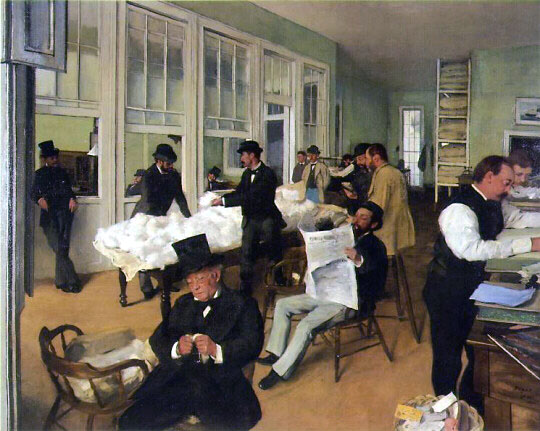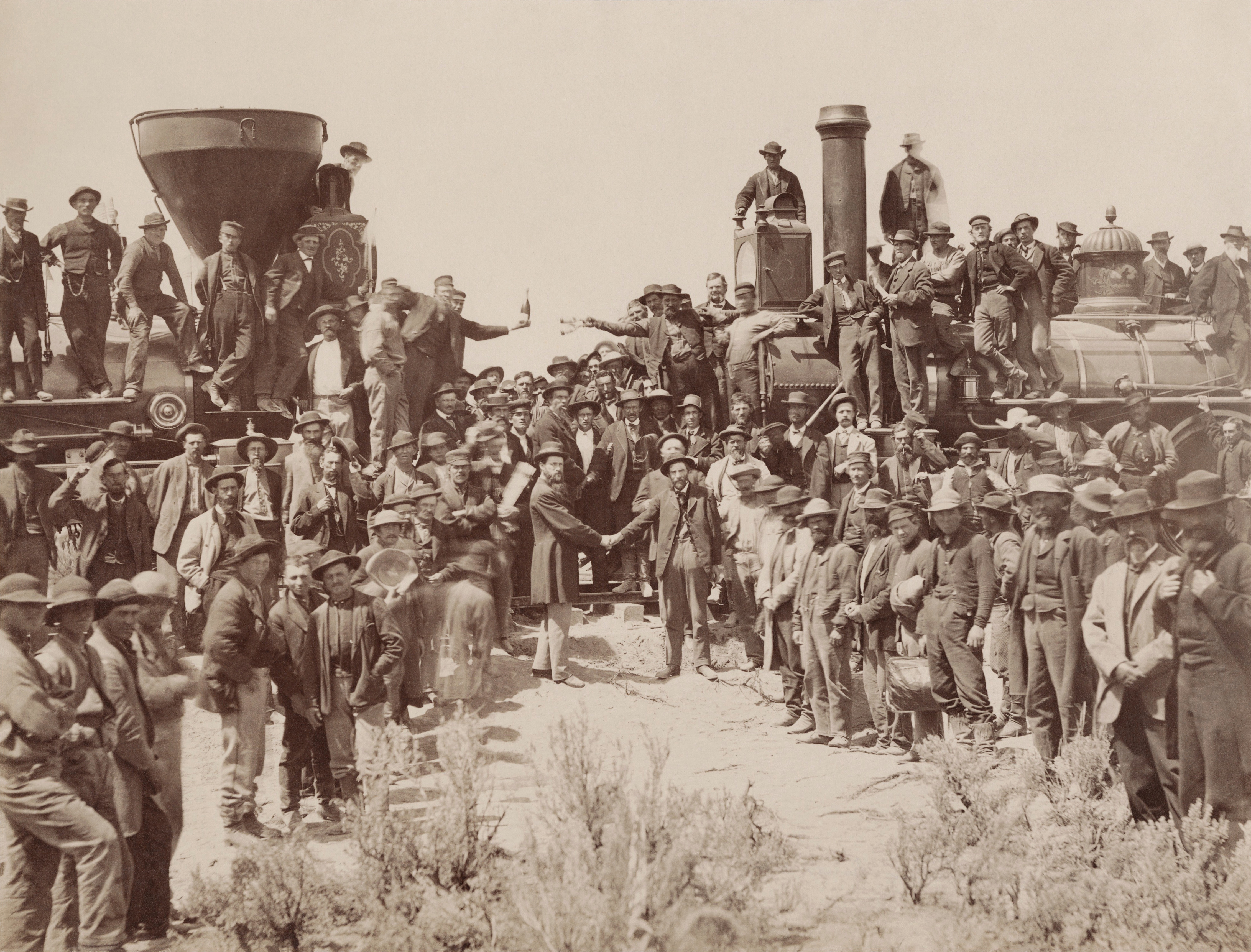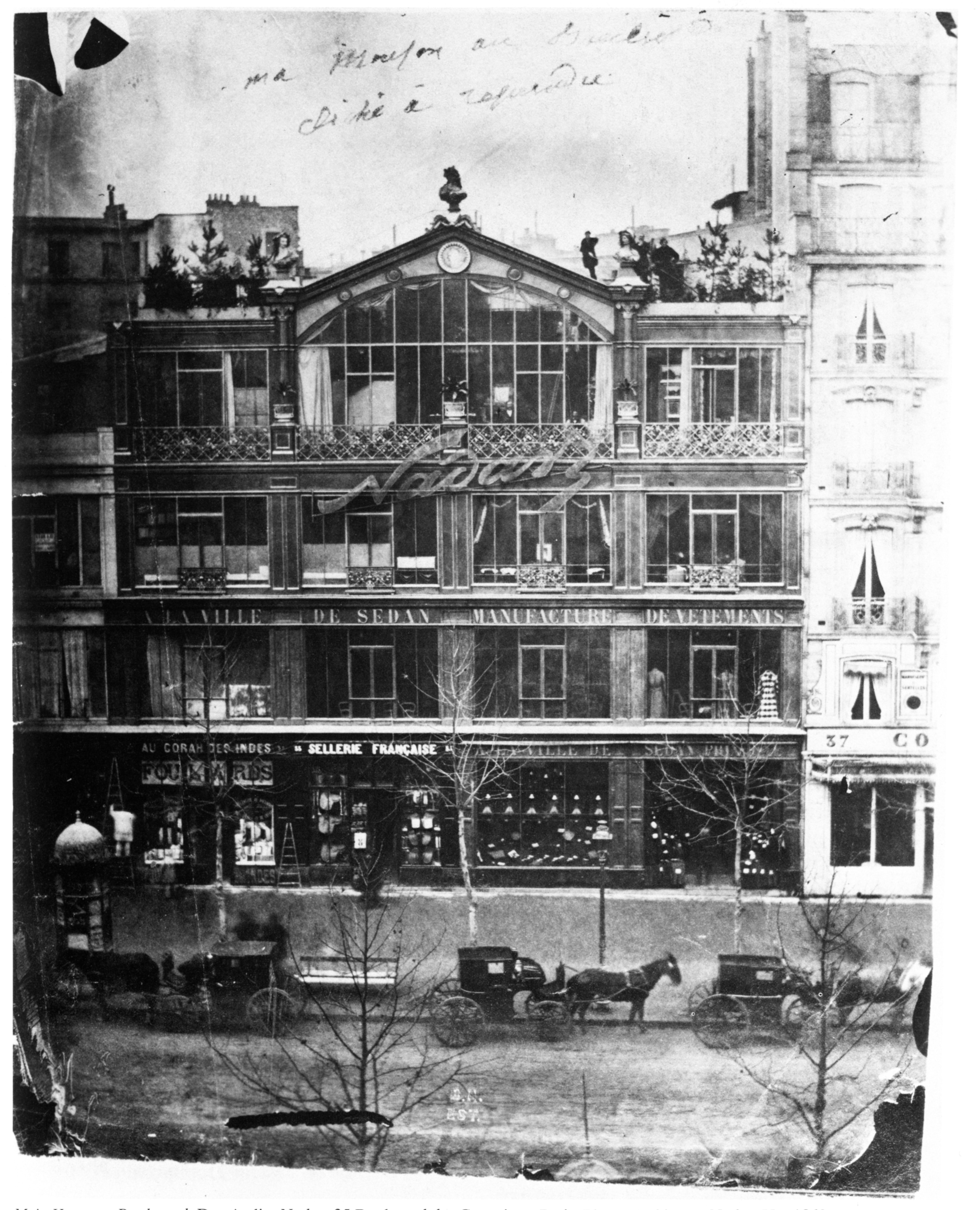|
At The Races In The Countryside
''At the Races in the Countryside'' or ''Carriage at the Races'' is an 1869 oil painting by the French painter Edgar Degas. The painting, which depicts a scene of a family in a horse-drawn carriage in the countryside, is on display at the Museum of Fine Arts Boston. The painting was shown at the First Impressionist Exhibition in 1874. Background In the summer of 1869, Edgar Degas visited Paul Valpinçon, an old childhood friend, at his estate in Ménil-Hubert. Valpinçon's son Henri had been born in January of the same year. ''At the Races in the Countryside'' depicts the Valpinçon family during an outing to the races in Argentan, fifteen kilometers from the Valpinçons's estate. Degas painted ''At the Races in the Countryside'' during his visit. Degas also depicted members of the Valpinçon family in other paintings during his visits to their estate. The 1865 painting ''A Woman Seated beside a Vase of Flowers'' depicts the wife Paul Valpinçon. The 1871 painting ''Portrait o ... [...More Info...] [...Related Items...] OR: [Wikipedia] [Google] [Baidu] |
Edgar Degas
Edgar Degas (, ; born Hilaire-Germain-Edgar De Gas, ; 19 July 183427 September 1917) was a French Impressionist artist famous for his pastel drawings and oil paintings. Degas also produced bronze sculptures, prints, and drawings. Degas is especially identified with the subject of dance; more than half of his works depict dancers. Although Degas is regarded as one of the founders of Impressionism, he rejected the term, preferring to be called a realist,Gordon and Forge 1988, p. 31 and did not paint outdoors as many Impressionists did. Degas was a superb draftsman, and particularly masterly in depicting movement, as can be seen in his rendition of dancers and bathing female nudes. In addition to ballet dancers and bathing women, Degas painted racehorses and racing jockeys, as well as portraits. His portraits are notable for their psychological complexity and their portrayal of human isolation. At the beginning of his career, Degas wanted to be a history painter, a callin ... [...More Info...] [...Related Items...] OR: [Wikipedia] [Google] [Baidu] |
New Orleans
New Orleans (commonly known as NOLA or The Big Easy among other nicknames) is a Consolidated city-county, consolidated city-parish located along the Mississippi River in the U.S. state of Louisiana. With a population of 383,997 at the 2020 United States census, 2020 census, it is the List of municipalities in Louisiana, most populous city in Louisiana and the French Louisiana region, the second-most populous in the Deep South, and the twelfth-most populous in the Southeastern United States. The city is coextensive with Orleans Parish, Louisiana, Orleans Parish. New Orleans serves as a major port and a commercial hub for the broader Gulf Coast of the United States, Gulf Coast region. The New Orleans metropolitan area has a population of approximately 1 million, making it the most populous metropolitan area in Louisiana and the List of metropolitan statistical areas, 59th-most populous in the United States. New Orleans is world-renowned for Music of New Orleans, its distincti ... [...More Info...] [...Related Items...] OR: [Wikipedia] [Google] [Baidu] |
Horses In Art
Horses have appeared in works of art throughout history, frequently as depictions of the horse in battle. The horse appears less frequently in modern art, partly because the horse is no longer significant either as a mode of transportation or as an implement of war. Most modern representations are of famous contemporary horses, artwork associated with horse racing, or artwork associated with the historic cowboy or Native American tradition of the American West. In the United Kingdom, depictions of fox hunting and nostalgic rural scenes involving horses continue to be made. Horses often appear in artworks singly, as a mount for an important person, or in teams, hitched to a variety of horse-drawn vehicles. History Prehistory The horse appeared in prehistoric cave paintings such as those in Lascaux, estimated to be about 17,000 years old. Prehistoric hill figures have been carved in the shape of the horse, specifically the Uffington White Horse, an example of the tradit ... [...More Info...] [...Related Items...] OR: [Wikipedia] [Google] [Baidu] |
Paintings By Edgar Degas
Painting is a visual art, which is characterized by the practice of applying paint, pigment, color or other medium to a solid surface (called "matrix" or "support"). The medium is commonly applied to the base with a brush. Other implements, such as palette knives, sponges, airbrushes, the artist's fingers, or even a dripping technique that uses gravity may be used. One who produces paintings is called a painter. In art, the term "painting" describes both the act and the result of the action (the final work is called "a painting"). The support for paintings includes such surfaces as walls, paper, canvas, wood, glass, lacquer, pottery, leaf, copper and concrete, and the painting may incorporate other materials, in single or multiple form, including sand, clay, paper, cardboard, newspaper, plaster, gold leaf, and even entire objects. Painting is an important form of visual art, bringing in elements such as drawing, composition, gesture, narration, and abstraction. Paintings can ... [...More Info...] [...Related Items...] OR: [Wikipedia] [Google] [Baidu] |
1869 Paintings
Events January * January 3 – Abdur Rahman Khan is defeated at Tinah Khan, and exiled from Afghanistan. * January 5 – Scotland's second oldest professional football team, Kilmarnock F.C., is founded. * January 20 – Elizabeth Cady Stanton is the first woman to testify before the United States Congress. * January 21 – The P.E.O. Sisterhood, a philanthropic educational organization for women, is founded at Iowa Wesleyan College in Mount Pleasant, Iowa. * January 27 – The Republic of Ezo is proclaimed on the northern Japanese island of Ezo (which will be renamed Hokkaidō on September 20) by remaining adherents to the Tokugawa shogunate. February * February 5 – Prospectors in Moliagul, Victoria, Australia, discover the largest alluvial gold nugget ever found, known as the "Welcome Stranger". * February 20 – Ranavalona II, the Merina Queen of Madagascar, is baptized. * February 25 – The Iron and Steel Institute is formed in London. ... [...More Info...] [...Related Items...] OR: [Wikipedia] [Google] [Baidu] |
Smarthistory
Smarthistory is a free resource for the study of art history created by art historians Beth Harris and Steven Zucker. Smarthistory is an independent not-for-profit organization and the official partner of the Khan Academy for art history. It is funded by the National Endowment for the Humanities. History Smarthistory started in 2005 as an audio guide series for use at the Metropolitan Museum of Art, The Museum of Modern Art in New York City, and as a resource for students taking introductory art history courses at the college level. In addition to its focus on college-level courses in art history, Smarthistory supports the art history Advanced Placement course and examination developed by The College Board. Smarthistory provides essays, videos, photographs, and links to additional resources for all of the art and architecture that make up the AP art history curriculum. Smarthistory has published more than 880 videos and 2,000 essays on art and cultural history from the Paleo ... [...More Info...] [...Related Items...] OR: [Wikipedia] [Google] [Baidu] |
Google Arts & Culture
Google Arts & Culture (formerly Google Art Project) is an online platform of high-resolution images and videos of artworks and cultural artifacts from partner cultural organizations throughout the world, operated by Google. It utilizes high-resolution image technology that enables the viewer to tour partner organization collections and galleries and explore the artworks' physical and contextual information. The platform includes advanced search capabilities and educational tools. A part of the images are used within Wikimedia, see the c:Google Art Project works by collection, category Google Art Project works by collection. Features (first version) Virtual Gallery Tour : Through the Virtual Gallery Tour (also known as Gallery View) users can virtually 'walk through' the galleries of each partner cultural organization, using the same controls as Google Street View or by clicking on the gallery's floorplan. Artwork View : From the Gallery View (also known as Microscope Vi ... [...More Info...] [...Related Items...] OR: [Wikipedia] [Google] [Baidu] |
Museum Of Fine Arts, Boston
The Museum of Fine Arts (often abbreviated as MFA Boston or MFA) is an art museum in Boston, Massachusetts. It is the list of largest art museums, 20th-largest art museum in the world, measured by public gallery area. It contains 8,161 paintings and more than 450,000 works of art, making it one of the most comprehensive collections in the Americas. With more than 1.2 million visitors a year, it is the List of most-visited art museums, 79th-most-visited art museum in the world . Founded in 1870 in Copley Square, the museum moved to its current Fenway–Kenmore, Fenway location in 1909. It is affiliated with the School of the Museum of Fine Arts at Tufts. History 1870–1907 The Museum of Fine Arts was founded in 1870 and was initially located on the top floor of the Boston Athenæum. Most of its initial collection came from the Athenæum's Art Gallery. In 1876, the museum moved to a highly ornamented brick Gothic Revival architecture, Gothic Revival building designed by John H ... [...More Info...] [...Related Items...] OR: [Wikipedia] [Google] [Baidu] |
Claude Monet
Oscar-Claude Monet (, ; ; 14 November 1840 – 5 December 1926) was a French painter and founder of Impressionism painting who is seen as a key precursor to modernism, especially in his attempts to paint nature as he perceived it. During his long career, he was the most consistent and prolific practitioner of Impressionism's philosophy of expressing one's perceptions of nature, especially as applied to ''En plein air, ''plein air'''' (outdoor) landscape painting. The term "Impressionism" is derived from the title of his painting ''Impression, Sunrise, Impression, soleil levant'', which was exhibited in 1874 at the First Impressionist Exhibition, initiated by Monet and a number of like-minded artists as an alternative to the Salon (Paris), Salon. Monet was raised in Le Havre, Normandy, and became interested in the outdoors and drawing from an early age. Although his mother, Louise-Justine Aubrée Monet, supported his ambitions to be a painter, his father, Claude-Adolphe, disa ... [...More Info...] [...Related Items...] OR: [Wikipedia] [Google] [Baidu] |
Impression, Sunrise
''Impression, Sunrise'' () is an 1872 painting by Claude Monet first shown at what would become known as the " Exhibition of the Impressionists" in Paris in April, 1874. The painting is credited with inspiring the name of the Impressionist movement. ''Impression, Sunrise'' depicts the port of Le Havre, Monet's hometown. It is usually displayed at the Musée Marmottan Monet but was on loan at the Musée d'Orsay from 26 March until 14 July 2024, and was at the National Gallery of Art in Washington, D.C. from 8 September 2024 until 19 January 2025. History Monet visited his hometown of Le Havre in the Northwest of France in 1872 and proceeded to create a series of works depicting the port. The six painted canvases depict the port "during dawn, day, dusk, and dark and from varying viewpoints, some from the water itself and others from a hotel room looking down over the port". ''Impression, Sunrise'' became the most famous in the series after being debuted in April 1874 in Paris ... [...More Info...] [...Related Items...] OR: [Wikipedia] [Google] [Baidu] |
Before The Race
''Before the Race'' (1882–1884) is a painting by Impressionist painter, Edgar Degas, who began painting scenes with horses in the 1860s. History Horse racing became a popular pastime in 19th century France under Louis-Philippe and Napoleon III. Degas began admiring horses while visiting friends in Normandy. Over the course of his career it is reported that he created 45 oils, 20 pastels, 250 drawings, and 17 sculptures related to horses. Degas was eager to know horses in anatomical detail.Werner, A., Degas: Pastels, Watson and Guptill, 1984, p. 60 As a student, Degas had filled his notebooks with drawings of horses. During a tour of breeding farms with Paul Valpincon and after exposure to horse races, Degas appreciated the movement of the horses and the colors of the jockeys uniforms. He wanted to make his paintings seem spontaneous as if he'd captured a passing moment.Meyer, S.E.,'' First Impressions: Edgar Degas'', Henry N. Abrams, 1994, p. 52 ''Before the Race'' is one ... [...More Info...] [...Related Items...] OR: [Wikipedia] [Google] [Baidu] |
Place De La Concorde (Degas)
The Place de la Concorde (; ) is a public square in Paris, France. Measuring in area, it is the largest square in the French capital. It is located in the city's eighth arrondissement, at the eastern end of the Champs-Élysées. It was the site of many notable public executions, including Louis XVI, Marie Antoinette and Maximilien Robespierre in the course of the French Revolution, during which the square was temporarily renamed the Place de la Révolution ('Revolution Square'). It received its current name in 1795 as a gesture of reconciliation in the later years of the revolution. A metro station is located at the northeastern corner of Place de la Concorde on Lines 1, 8, and 12 of the Paris Métro. History Design and construction The square was originally designed to be the site of an equestrian statue of King Louis XV, commissioned in 1748 by the merchants of Paris, to celebrate the recovery of King Louis XV from a serious illness. The site chosen for the statue ... [...More Info...] [...Related Items...] OR: [Wikipedia] [Google] [Baidu] |






